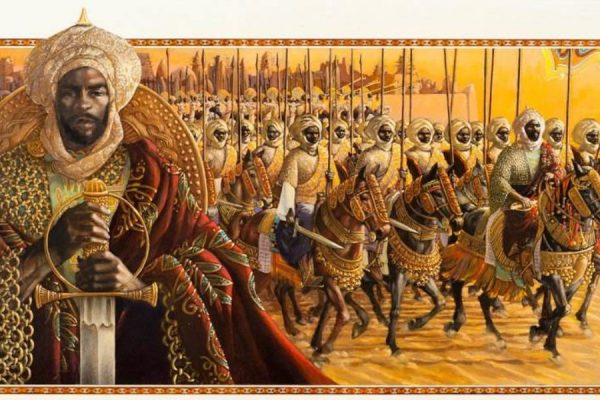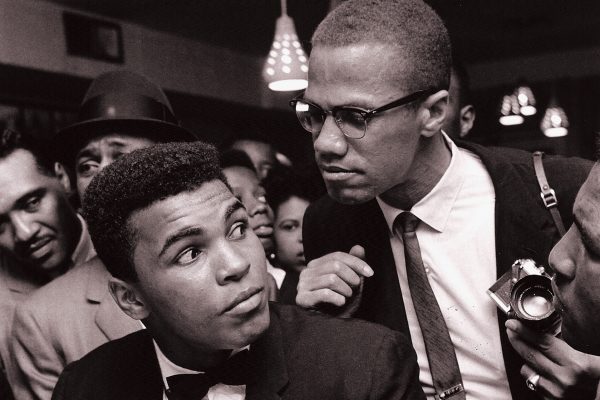This film is very timely, as demonstrated by the rise of racial justice movements in American due to the recent killings of George Floyd, Breonna Taylor, Eric Garner, Ahmaud Arbery, and many more extrajudicial killings that take place every year in America.
This film is very timely, as demonstrated by the rise of racial justice movements in American due to the recent killings of George Floyd, Breonna Taylor, Eric Garner, Ahmaud Arbery, and many more extrajudicial killings that take place every year in America.
One Night in Miami is the directorial feature film debut of Regina King. It tells the story of four prominent Black Americans who in 1964 met up in a Miami motel after Muhammad Ali’s world championship win over Sonny Liston.
The film is a dramatisation of that night and was inspired by the actual meeting between Malcolm X (Kingsley Ben-Adir), Cassius Clay/Muhammad Ali (Eli Goree), Jim Brown (Aldis Hodge), and Sam Cooke (Leslie Odom Jr).
The film explores powerful themes of identity, social justice, civil rights, and the racism institutionalised in American society; many argue five decades on, America still has a major racist problem that it needs to face up to.
The first scenes establish each of the four personalities featured in this film and some of the trials and tribulations they experience. The scene that blew me away is the introduction scene with Jim Brown. Jim Brown is a former American football player and actor, considered by some to be the greatest football player of all time.
In this scene, Brown meets his mother’s former employer Mr Carlton (Beau Bridges), a white man; in his late sixties, respectable, polite, a family man, landowner. Carlton showers Brown with compliments about his sporting achievements and expresses his pride in Brown as they sit on the porch outside of his house drinking their freshly made lemonades. The twist comes when Carlton decides to go into his house to move furniture, and Brown offers to help him. But Carlton ever gently and politely replies, “so considerate of you, Jimmy, but you know we don’t allow niggers in the house…”.
The last part of that scene really pained me to watch. We see Jim Brown standing outside the doorway; his face demonstrates the struggle Black Americans felt against an engrained racism that lurked underneath society. Even when they are superficially complimented and praised for outstanding achievements, Black Americans are never really accepted by the white establishment.
Screenwriter Kemp Power understands there is an undercurrent of racism and perception that has a real-world effect on a whole group of people in America; “when Black people in America go to the hospital, we don’t get anesthetics as much as white people, because there’s a perception that we have a higher tolerance for pain. And as an end result of that, we suffer when we go to the hospital and Black women have higher mortality rates or when they report problems, they’re not taken as seriously.”
The film has some great performances, and the outstanding performance for me was Eli Goree playing Cassius Clay beautifully. The middle of the film is a bit slow as it tries to establish the story and demonstrate each personalities perspective on the struggles of Black Americans. The last third of the film brings all the elements together and explores powerful themes of identity, struggle, and the deep-rooted racism that Malcolm X fought against.
As I stated, the story is dramatised. There are no accurate records of what was discussed in the gathering at Hampton Hotel back in 1964, one of a few hotels that permitted Black American guests during those segregation years. In some ways, it is hard for some outside of the U.S. to imagine an America that was segregated so severely, where White Americans were permitted access to many places that Black Americans were not. But it was a historic reality well into the second half of the 20th century.
The story continues and explores the painful struggles against institutionalised racism that Malcolm X and Sam Cooke debate about. Sam Cooke was a successful singer, songwriter, entrepreneur and sang “A Change Is Gonna Come”, which became the anthem of the Civil Rights Movement. I felt a sense of pain as I watched the last third of this film, as it really reminded me how five decades on and the Black Americans and other minorities in America are still fighting and struggling for justice and equality. Kemp Powers, the film’s screenwriter, stated in an interview, “The conversations that these guys are having are absolutely conversations that are still happening today.”
This film is very timely, as demonstrated by the rise of racial justice movements in American due to the recent killings of George Floyd, Breonna Taylor, Eric Garner, Ahmaud Arbery, and many more extrajudicial killings that take place every year in America. This violent historical relationship between the American establishment and minorities is addressed by Regina King;
I‘m proud to be an American, there are equally as many qualities that are not ones filled with pride, at least for me, and for most marginalised people that I know that are American. You know, those things are just as much a part of the fabric of the country as any other.”
The lack of justice in the face of the brutality inflicted by some of the American law enforcement and government bodies demonstrates the impunity and institutional racism still endemic in American society. The struggles of Malcolm X, Martin Luther King Jr, and many other civil rights leaders are far from over. Regina King reminds us, “this subject has been present for Black people ever since our history in America has existed.”
One Night in Miami is a painful and genuine reminder that many of the struggles against racism and injustice have not been overcome. Many still struggle against the evil of discrimination.





